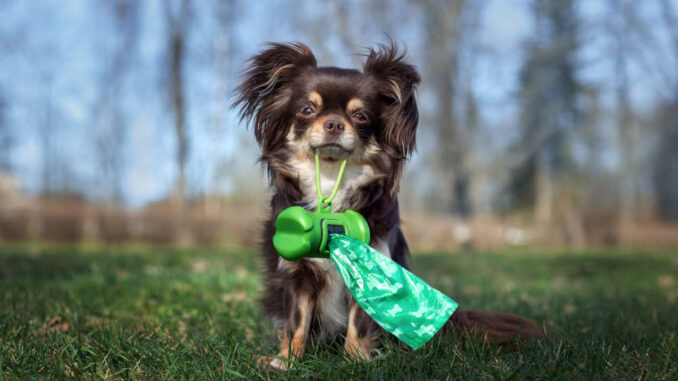
Perhaps not the most pleasant of topics to discuss, it is actually really valuable to monitor your dog’s poop. Picking up on changes like a sloppy consistency or a change in color can provide some very useful information when it comes to their health.
As a veterinarian in general practice, I’ll always encourage owners to email me photos or to bring in stool samples, so I can assess the stool if they think it seems abnormal. Bright yellow poop is not an uncommon issue and one that can have many causes.
What do we mean by “bright yellow”?
A normal poop will be anything from a light to a chestnut brown. If we are seeing bright yellow, this is a sign something is not quite as it should be.
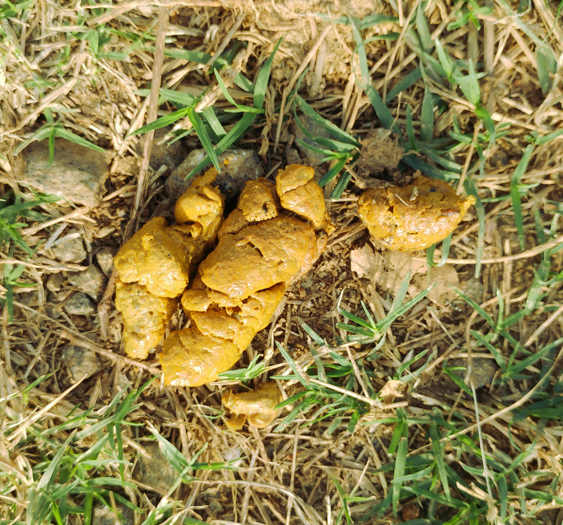
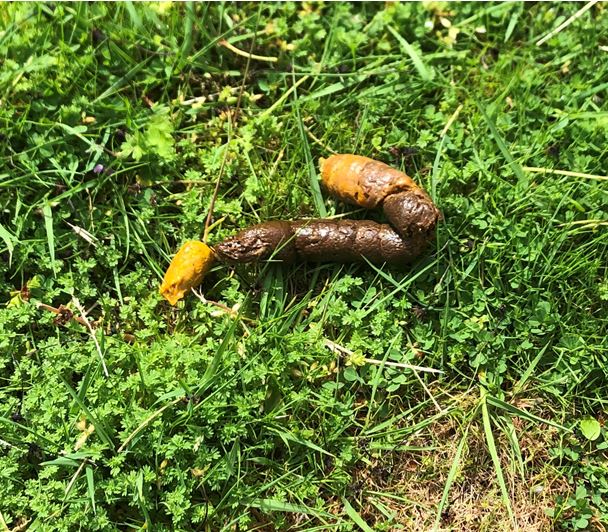
Is bright yellow poop a reason to be worried?
A one-off bright yellow poop in a dog who is otherwise well is not something that is going to cause me much concern or have me running a range of medical tests. Sometimes, it is just a sign that the food has moved a little too quickly through the digestive tract, or that the dog has munched on something they should not have.
Top reasons for bright yellow poop
Diet
Consider if you have recently changed your dog’s food or given them a new treat. It may be that this has caused a stomach upset, or perhaps that the new food contains a bright yellow coloring.
It is sensible to offer a bland diet (like a few days of boiled chicken and rice) to see if the stool turns back to normal.
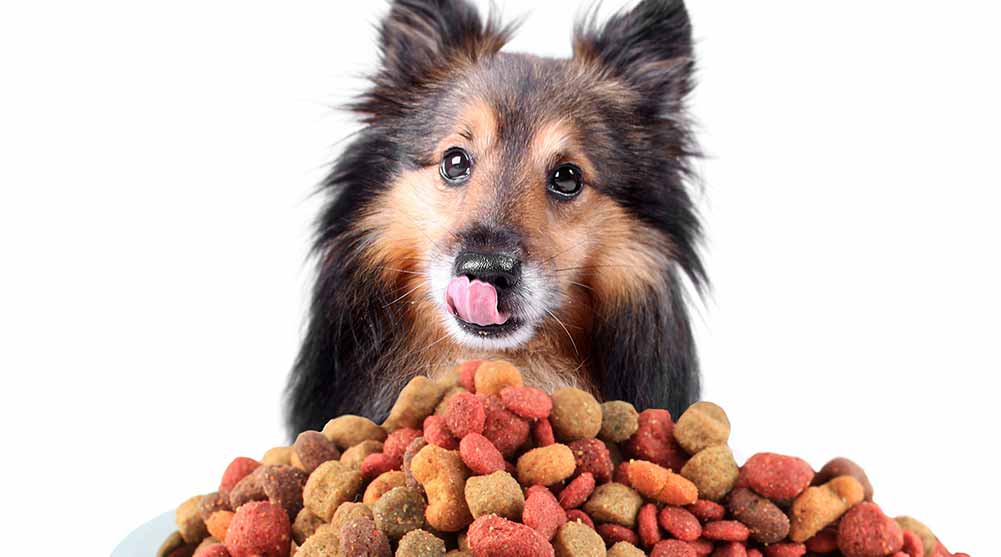
Liver or gall bladder disease
Many of the owners I speak to about yellow poop will automatically worry their dog has a problem with their liver. They are aware of the link between liver issues and yellow skin and poop. However, there are plenty of other things that can cause yellow stool, so it is important not to jump to conclusions.
When the bile is not broken down by the body as it should be, the bright yellow pigment can be visible in both the stool and urine.
A dog with yellow stool due to liver or gall bladder issues is usually quite unwell with other symptoms including jaundice (yellow skin, sclera and yellow gums), vomiting, weight loss and food refusal.
Pancreatic disorders
An issue with the pancreas, such as pancreatitis, can lead to the digestive enzymes not being produced as they should and inefficient digestion, this can mean food and bile are not broken down properly. Issues with the pancreas cause a myriad of symptoms which are hard to miss, including abdominal pain (resulting in the ‘prayer position‘ and stretching) and vomiting.
So if your dog is acting as normal except for some yellow stool, the pancreas is probably not where the problem lies.
Infectious disease
Viral and bacterial infections can lead to yellow stool which may be watery and could contain blood and mucus. Dogs might have other signs including flatulence, a reduced appetite and vomiting.
Those who are not up to date with their vaccines and those who spend a lot of time with other dogs are most at risk. Oftentimes, we treat infections with symptomatic care such as a bland diet, fluids and rest. Most patients recover within a few days.
IBD or food allergies
When a dog is not digesting their food as they should, this can lead to ongoing issues with diarrhea, discolored poop and a general failure to thrive. Importantly, a food that was once tolerated may start to cause signs as the dog gets older and their disease develops. Oftentimes, signs start when a dog is between 6 months and 5 years old.
In my experience, food allergies are over-diagnosed by owners, but they do occur in a proportion of dogs with G.I. issues. For these dogs, trialing a hypoallergenic or elimination diet is sensible. More severe cases may require additional medicine, such as steroids.
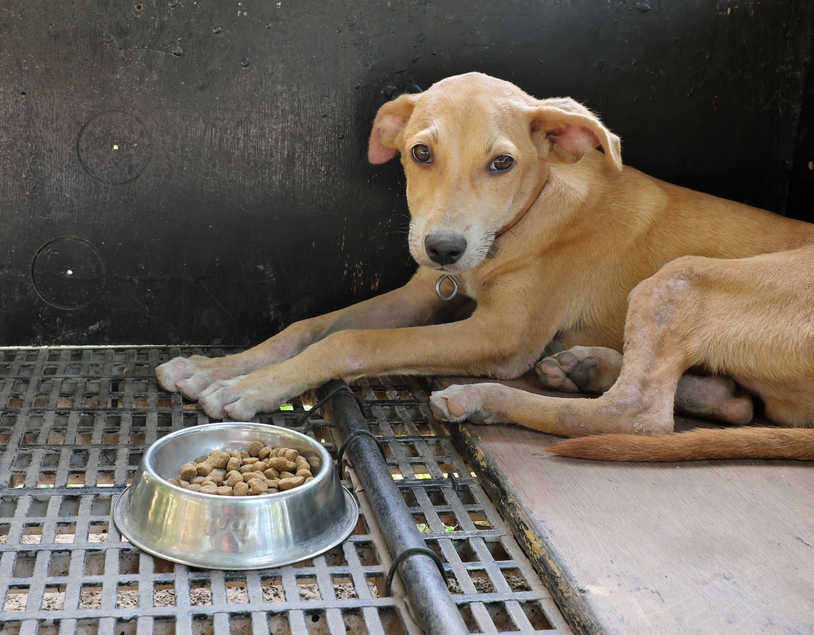
8 steps you can take at home to help your dog
If you notice your dog’s poop looks different and you’re concerned it is yellow in color, there are things that you can do. Firstly, pay attention to your dog. Check them all over for any other symptoms, such as yellow gums, a bloated tummy or feeling hot to the touch. It is also sensible to consider what they’ve had to eat in the last 24 hours and to consider how their appetite and energy levels have been.
For a dog who seems generally well, we should not panic if one or two poops are yellow. This tends to be a short-term issue that resolves without treatment.
You can:
- Feed a bland diet such as boiled chicken and rice or turkey and sweet potato for a couple of days
- Start a course of probiotics, to help ensure a healthy gut microbiome (more on this later)
- Ensure your dog is up to date with a broad acting wormer
- Keep your dog well hydrated with some rehydration solutions if their stool is sloppy
- Encourage rest
- Keep a close eye for any new symptoms and check your dog’s stools closely after they are passed, to ensure the issue is improving
- Check around your home and garden for anything your dog may have snaffled which they shouldn’t have, such as tablets from your medicine cabinet or yellow crayons from the kid’s room
- Schedule a vet visit if you’re concerned or the issue is not resolving as expected
Best products to help at home
Purina Fortiflora
I’m a big fan of these probiotic sachets, which can be used as soon as you notice a change in the stool. I tend to recommend them a great deal, and would usually advise they’re used in cases of diarrhea and yellow stool. They are easy to give with food each day and dogs do not mind the taste.
These probiotics are well tolerated and safe for puppies. Studies have shown they can shorten the duration of bouts of diarrhea (1)((Evaluation of Metronidazole With and Without Enterococcus Faecium SF68 in Shelter Dogs With Diarrhea)).
- Number one probiotic supplement recommended by veterinarians (Kantar Veterinary Tracker, 2020)
Fenbendazole/Panacur
As a vet, it can be frustrating when an owner has purchased an over the counter wormer that is ineffective. They’ve paid good money for this product, but it would not stand up in clinical trials or perhaps only treats 1 or 2 types of worms.
We want to ensure our pets are fully covered against parasites, and I’m a big fan of Fenbendazole for this purpose. It can be used on pups as young as 2 weeks of age and any side effects are rare, so it is my ‘go to’ wormer in puppies. This powder is particularly nice as it can be easily mixed with food.
As well as treating Toxascaris leonina, Ancylostoma caninum, Uncinaria stenocephala, Trichuris vulpis, and Taenia pisiformis, studies have shown efficacy against Giardia infestations (2).1
- Mix the daily dose with a small amount of your dog’s usual food. Your dog should eat all of the medicated food. If feeding dry dog food, it may need to be moistened to aid mixing
Do I need to take my dog to the vet?
As mentioned, one or two yellow poops are not enough to ring my alarm bells. This could just be caused by a stomach upset and most of the time, these dogs can be managed from home. If your dog is happy and eating and has no other signs, I’d try some at home remedies while keeping a close eye on them.
Their gums should be pink and wet and their appetite should not be affected. Similarly, they should not have any vomiting, lethargy or bloating.
Signs that you need to call the veterinarian
It is important to contact your vet if your dog is unwell and has been experiencing yellow stool.
Red flags for me would include:
- Signs of abdominal pain such as back arching and going into ‘the prayer position’
- Vomiting alongside loose or yellow stool
- Yellow tinged skin or mucus membranes
- Lethargy
- Food refusal
- A fever
- Recent weight loss
- Abdominal bloating
- Yellow stool that is not resolving within a couple of days
References
- https://www.sciencedirect.com/science/article/abs/pii/S193897361730106X
- https://europepmc.org/article/med/7978640
- Efficacy of fenbendazole against giardiasis in dogs. Barr SC 1, Bowman DD , Heller RL [↩]
Disclaimer: This website's content is not a substitute for veterinary care. Always consult with your veterinarian for healthcare decisions. Read More.




Be the first to comment